List of Authors
>>About this blog
Recent blog post
|
[Taro Edo]
March 1, 2015 09:00
"Foreign settlements" designated by the government as foreign settlements and trading areas.
Yokohama and Kobe are famous, but did you know that they were also installed in Akashicho in Chuo-ku?
On a cold winter day, I walked around Akashicho, which leaves the impression of "Tsukiji Foreign Reservation".
[Walking Course]
1: Birthplace of Women's Seigakuin → 2: The birthplace of Aoyama Gakuin → 3: The birthplace of Meiji Gakuin → 4: Henry•The birthplace of Folds' fingerprint research → 5: Monument to the ruins of the United States Missionary → 6: Ruins of Tsukiji Remains → 7: The birthplace of Keio Gijuku → 8: The land of Rikkyo Gakuin's launch → 9: Birthplace of Women's Academy 10: Toysler Memorial Hall, St. Luke's International Hospital 11: → 12: Catholic Tsukiji Church → 13: The land of the opening of the Futaba Gakuen School
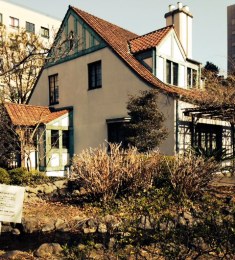 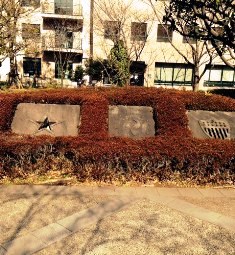
(Photo left: Toysler Memorial Hall, St. Luke's International Hospital, right: Monument to the ruins of the United States Missionary.)
[About Tsukiji Foreign Settlement]
In June 1858, Edo shogunate signed a trade agreement with the United States to the Treaty of Commerce and Trade with the Osamu Good Commerce and Industry.•Russia•U.K.•We have concluded each agreement with France. (Convention of the 5th Ansei Convention)
Based on this treaty, we decided to open five ports in Hakodate (Hakodate), Kanagawa (Yokohama), Nagasaki, Niigata and Hyogo (Kobe).
Foreign settlements in Japan have been set up as special special wards for the residence and commerce of foreigners in countries with the treaty.
The opening of Edo (Tokyo) was realized on November 19, 1868 under the new Meiji government, and Tsukiji foreign settlements were set up in the current Akashicho area.
Unlike Yokohama and Kobe, where there were many trading houses, Tsukiji foreign settlements, missionaries from overseas, including foreign ministers and consulates, and other foreign missionaries.•Doctor•Teachers lived in the settlement and opened many churches and schools to educate.
For this reason, it originated in Tsukiji foreign settlement.•There are many Christianity schools that have been opened, and they are still developing while changing the school name and location, and there are many stone monuments commemorating the birth in this area.
Tsukiji Foreign Settlement, which had a great feature as a Bunkyo district, formed a district that had a great influence on the modernization of Japan until it was abolished in 1899 due to the revision of the treaty.
The population of Tsukiji foreign settlements was 336 in 157 units in December 1892, at its peak.
Source: Chuo-ku Board of Education
Books : "Tsukiji Reservation" Tsukiji Reservation Study Group
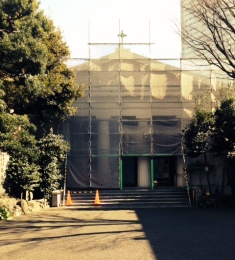 (The Catholic Tsukiji Church was under investigation and repair of the cathedral.) (The Catholic Tsukiji Church was under investigation and repair of the cathedral.)
[Taro Edo]
February 4, 2015 14:00
In the cold weather, I went to see Shintomiza Children's Kabuki.
This is the dedication of the Setsubun Festival at Tepposu Inari Shrine.
1) Date and time Sunday, February 1, 2015 from 1:30 pm to 3:00 pm
2) Venue Tetsuzu Inari Shrine
3) Performance
1. Kotobuki-style Sanbaso
Highlights
Sanbaso is a ceremony-colored dance based on a work called Noh [Okina].
There is a prayer that the country will calm down peacefully, each family will live happily, and the five grains will grow generously.
There is a gesture of shaking and sounding the tin and stepping on the stage crisply, that is, this is a call to the spirit of heaven and earth. We, the Japanese, have purely wished that the climate is blessed and the soil is fertile.
2. The place of Koshinzuka, Sanbashi Shiranami Okawabata
A rough
Setsubun night. Oose had a hundred cars that the customer had forgotten last night and came to Okawabata to look for him. However, a daughter in a kimono that appeared there deprived one hundred cars and fell into the river. The girl was Yoshizo, a lady of reputation, dressed as a woman.
The young lady also robbed the sword from Taroemon, who witnessed the scene, and was intoxicated by the goodness of her neck tonight.
He saw this from the shade.
In 100 cars, they will be a game of skill.
It was also the thief Yoshizo Kazuo who stopped there. Eventually, the two were impressed by Yoshizo Kazuo's masculinity and wished to become brothers. Yoshizo Kazuo responded to the feelings of the two, and here the three thieves of the same name Yoshizo changed a hard blood cup.
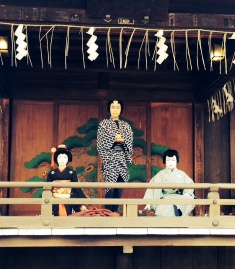
3. The place of the five Shiranami men Inasegawa Oshise
A rough
Hamamatsu-ya's work triggered the growth of the scrutiny of Niemon Ichimi.
The five men come to the embankment of the Inase River, where cherry blossoms are in full bloom, to escape the pursuers and fall to Kamakura for the time being.
The men who are ready to work on the rope and get ready to get on the rope if they can't escape any more in a matching small sleeve.
So he was surrounded by the ambushed catchers, but innocently he said, "I will not be defeated," raised his name, and confronted the catchers.
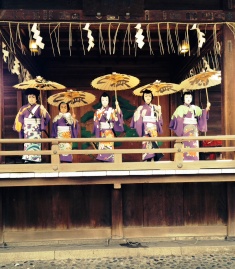
"Shintomiza Children's Kabuki" Association hosted by the source
[Taro Edo]
January 14, 2015 12:00
I went to the cold bathing tournament at Tetsunan Inari Shrine, a New Year's tradition in Chuo-ku, Tokyo.
1) Date and time
It was carried out from 11:00 am to 11:35 am on Sunday, January 11, 2015.
2) Venue
1-6-7 Minato, Chuo-ku, Tokyo
3) Overview
It was started as a ritual of purification for sound health for one year.
It started in 1955 and this is the 60th time this year.
After Miyashi's exorcism, a careful preparatory exercise is carried out, and about 100 people in loincloths (for women, white clothing) enter the aquarium with ice pillars.
4) The significance of bathing in the cold
Every year in the beginning of the New Year, during the cold bath at the Tetsugansu Inari Shrine is a Shinto ritual that prays for sound health by bathing in cold water in front of the shrine in the New Year and performing a purification ceremony to clean the mind and body. It is a pure Japanese language that is not found in Chinese language, so it can be seen that it is a custom unique to Japan.
It is said that the 60th anniversary of the festival was revived in 2015 by local people who were saved from epidemic diseases through thin clothes and bathing in the Edo period with gratitude to guardian god.
Since it was introduced to the top in the "Water Festival" section of the Adult Metropolitan Area Walking Magazine "Walking Master Mook / Festival & Event Calendar 2009" issued by the Kotsu Shimbun in 2008, Kanto's best tradition It has gained popularity as a prestigious water festival, and the number of participants and visitors increases every year.
5) How to bathe in the cold
Nara period, who was born in Usa-gun, Oita Prefecture in 1862, revived the purification method of Mitake Shrine, located at the summit of Mt. Mitake (929m), Ome City, Tokyo. There are a number of schools, but there is no big difference, and the cold bathing performed at Tetsugansu Inari Shrine is also performed by the purification method of the river surface style under the guidance of the Tokyo Shrine Agency's Narinari Event Michihiko (Guman) and Naotsushi Shinoheikawa Shrine Miyaji. It is done.
After going out on the public road and running around the shrine, as the Tetsugunshu Hayashi played in Kagura Hall flows, they performed bird boats for preparatory exercises, entered a cool water tank with large icicles, immersed in cold water to the chest, and soaked in cold water...."I purify my mind and body while doing the soul while chanting." After the end, we will conduct a reorganization campaign with a bird boat again and finish the cold purification ceremony.
The Arido Okami is the gods responsible for the exorcism in Shinto.•The filth flows from the river to the sea.•Fast-opening Tobi Sales (Since on the Seabed)•It is the four gods of swallowing the filthyness), Ki Fukido (breathing in the root country), and Hasasurahiuri (the sins and filth brought into the root country and loses). It is also called the four gods of exorcism, and it is a thankful gods who release our sins and filth deep underground based on the same concept as the current waste disposal. Therefore, during the water line, he recites Arido Okami many times. Miyaji's felicitation "great exorcism Lyrics" in great exorcism in June and December recites the relay of sin and filth by the Oga and others, so I understand you are listening well.
The details are as follows.
1) Run around the shrine
2) Bird boat event (Torifuneiji)
3) The soul (Furitama)
4) Yuken event (Otakebigyoji)
5) Yuzume event (Okorobigyoji)
6) Kebuki event
7) Kanmisogi
Source: Information for bathing participants of the Iron Gunshu Inari Shrine Yayoikai
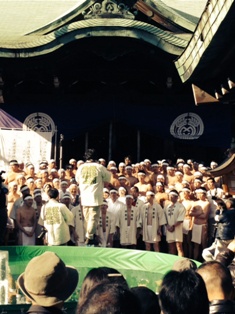 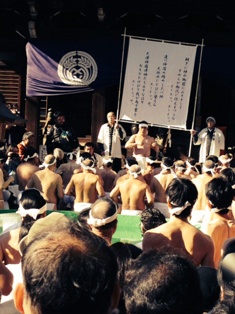
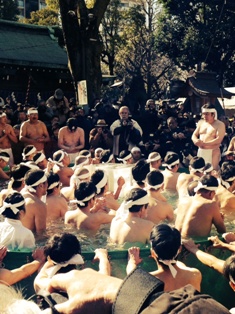 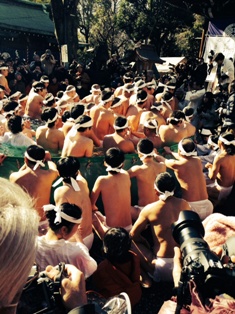
[Taro Edo]
December 25, 2014 14:00
You can see winter constellations at Akashi Time Dome.
It's perfect for a date with a full mood.
1st term until Sunday, March 8
2 Place Akashi Time Dome
3 Contents [screening three times a day]
 1st Fuyu no Hoshizora (with subtitles) 1st Fuyu no Hoshizora (with subtitles)
Detective Conan's Starry Sky Magician
Detective Conan, familiar with TV and movies, finally appears in the planetarium.
The confrontation between Kid and Conan unfolding under the starry sky. I'm looking forward to it.
◉From Tuesday to Friday at 3:00 pm
◉11:30 a.m. on Saturdays, Sundays and Holidays
 Explanation of the second starry sky Explanation of the second starry sky
[HAYABUSA BACK TO THE EARTH]
Hayabusa is an asteroid explorer launched in May 2003 and overcame numerous difficulties in 2010. This work is full of realism that adds images of the earth's return scene to the exploration journey filled with the turbulence and excitement of Hayabusa, which explores the mystery of the birth of the solar system.
◉From Tuesday to Friday 4:30 pm
◉2:30 p.m. on Saturdays, Sunday and public holidays
 3rd Winter Starry Sky 3rd Winter Starry Sky
"Night of the Galactic Railway"
We thoroughly consider the fantasy world of Miyazawa Kenji's "Night of the Galactic Railway", which was said to be difficult to visualize, and reproduce it clearly. Experience the dream time as if you were on a real galaxy railway, wrapped in an impressive landscape you have never seen before.
◉Tuesday to Friday 6:00 p.m.
◉Saturday, Sunday and public holidays 4:00 p.m.
4 Appreciation fee
300 yen (preschool children)•Free for elementary and junior high school students in the city)
5 Inquiries
Local Tenmonkan "Akashi Time Dome"
TEL: 03ー3546ー5537

[Taro Edo]
Nov. 28, 2014 18:00
Chuo-ku is held twice a year in spring and autumn.
1 Business name: Hard tennis classroom
By the way, the schedule is from April 11 to May 20 in the spring of 2014, and from September 9 to October 17 in the fall on Tuesday and Friday from September 9 to October 17.
2015 is undecided.
2 times: 10 times in total In principle, Tuesday and Friday
3 hours: From 6:30 pm to 8:30 pm
4 Venue: The school grounds of Kyobashi and Tsukiji Elementary School
5 Lesson fee: 2,500 yen in total 10 times
6 Targets :18 years old or older
7 Capacity :60 people
Details will be published in the ward's news [central] March 1 and August 1.
I was also invited to participate in a hard tennis class for the first time.
There are A class for those who have first divided into classes and have never played tennis at all, B class for those who have played a little tennis, and C class for senior who have graduated from A class.
In each class, 3 to 5 coaches can be taught kindly and politely, so it is safe for beginners.
Occasionally, after the hard tennis class ends, there is also a social gathering, where you can make friends and it is a very fun classroom.
If you want to start playing tennis, why don't you join us?
[Taro Edo]
October 31, 2014 14:00
The Chuo-ku Symphony Orchestra is an amateur orchestra founded in 1994, based in Chuo-ku, Tokyo. It seems that he is working with the aim of "a performance activity rooted in the community as an orchestra that is fun and familiar."
1.Date and time: Saturday, November 8, 2014
13:30 Venue
14:00 Start
2.Admission fee
1,000 yen (free for junior high school students and younger)
3.Location
Dai-ichi Life Hall
Harumi, Chuo-ku, Tokyo 1-8-9
TEL: 03ー3532ー3535
4.Conductor
Toru Nakajima
5.The song
○ Wagner Opera [Tanhizer] Overture
○Dvorak Symphony [Song of Hero] Op.111
○Brahms Symphony No. 1 C, Op.68
The Dai-ichi Life Hall, which will be the venue, was built in Harumi Triton Square in 2001.
It has a long history as a hall, and was located on the 6th floor of Dai-ichi Seimeikan, which faces the moat of the Imperial Palace in 1952. Originally, it was a meeting room inside the Dai-ichi Seimeikan, and when it was requisitioned by GHQ, GHQ meetings, worship, drama, etc. were also held.
In 1952 after the war, the first regular concert of the Konoe Orchestra conducted by Hidemaro Konoe opened, and in the early 1950s, performances such as regular concerts of the Konoe Orchestra and indoor appreciation parties such as the N Hibiki Chamber Orchestra were frequently performed, and the Dai-ichi Life Hall quickly became established as Japan's leading chamber music concert hall.
Why don't you enjoy classical music in a hall that continues to walk in a new place while feeling such a history?
|
Links
|
(The Catholic Tsukiji Church was under investigation and repair of the cathedral.)








